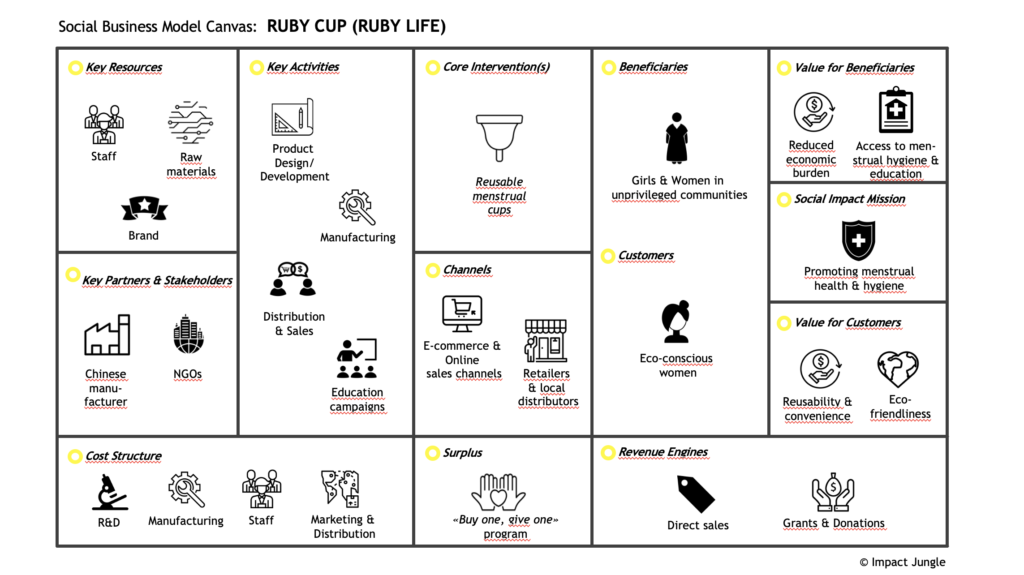
RUBY CUP BUSINESS MODEL
MAKING MENSTRUAL PRODUCTS ACCESSIBLE TO ALL
Picture this: a company born from passion, launched in 2011 by visionary founders Veronica Souza, Julie Weigaard Kjaer and Maxie Matthiessen. The mission? To redefine the way women experience menstruation while championing our planet’s health.
Fast forward to today, since its pioneering debut, Ruby Life has soared beyond mere menstrual care. Today, it embodies indeed a paradigm shift: a symbol of empowerment and environmental stewardship. Beyond the confines of traditional menstrual solutions, thanks to its core product “Ruby Cup” the company stands tall as an embodiment of empowerment and eco-responsibility.
Problem in context
Every month, 1.8 billion people across the globe menstruate. Yet, menstruation often comes with various challenges, stigmas, and misconceptions that impact individuals, particularly in low-income countries.
As a matter of fact, according to UNICEF approximately 500 million women and girls around the world lack adequate facilities and products for menstrual hygiene management. On top of that, in developing countries only 1 in 3 girls has access to menstrual hygiene materials. On top of that, there’s is often limited to no education or awareness on the topic. Only 1 in 5 girls receive indeed accurate information about menstruation before their first period.
All such challenges, together with cultural stigmas and taboos, constantly lead to major health as well as gender equality concerns.
Ruby Cup Business Model
Please note we will refer from now on to Ruby Life (parent company) and Ruby Cup (core product) interchangeably.
Ruby Cup business model builds on the “buy one, donate one” pattern: for every period product purchased, the company donates one to girls and women lacking access to it.
Such model is typically described as a “customer segment cross-subsidization” model. Just as seen with Aravind Eye Care, revenues generated by one target (paying customers) cover indeed the costs of production and delivery to another target (beneficiaries).
Although the “buy one, give one model” has seen its fair share of skepticism in the past, along time it also saw many positive improvements. Today, if recipients’ needs and peculiarities are mindfully taken into consideration, such models can truly spark innovation, as business growth and impact making are tied together.
De-coding Ruby Cup: Social Business Model Canvas
Let’s now make the most out of the Social Business Model Canvas to further analyze the company.

Template adapted from © Tandemic
Ready to deep dive into each section of the Canvas ?
